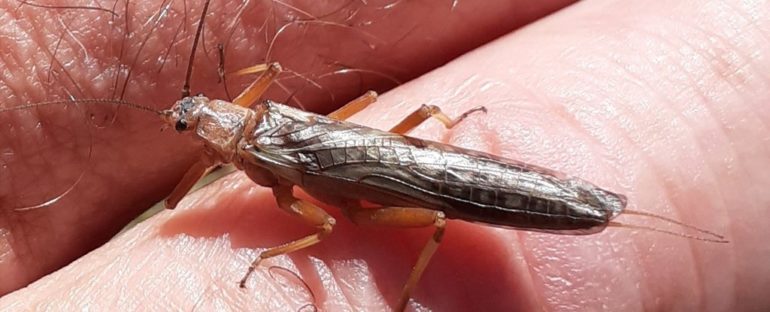People in New Zealand have cut down so many trees, some native insects are losing their wings.
In the space of 750 years, humans have changed the natural landscape of the country’s South Island so much, scientists say it’s causing rapid evolutionary changes among certain species.
With no more alpine forest to break the strong mountaintop winds, at least one type of insect is already transitioning out of the flight industry.
Zelandoperla fenestrata is a stonefly with two distinct phenotypes: one with wings, capable of flight; and one with stunted wings or even none, described as flightless.
The flightless type of stonefly is usually found at higher altitudes, where trees are scarce and strong winds can therefore easily blow a flying insect out into the abyss. Meanwhile, the flight-capable flies are typically sheltered in alpine forests, where insects need to explore the full extent of the habitat.
However, in regions where alpine forests have been cut down, researchers have noticed something intriguing. The insects at this elevation, which should usually be able to fly, can’t do so.
It appears that human-caused deforestation has indirectly deprived these insects of their ability to fly, and we did so in a very short space of time, evolutionarily speaking.
Widespread burning of native forest commenced shortly after Māori arrival sometime after 1200 CE, and by now, more than 40 percent of the forests that once covered New Zealand’s South Island have been transformed into grassland and fern-shrubland. Even though this was the last major landmass to be developed by humans, we are already seeing the evolutionary impact on local wildlife.
The now-flightless stonefly is likely just the tip of the iceberg.
“In addition to the local shifts inferred here, it is likely that widespread deforestation has increased the proportion of flightless lineages across large areas of southern New Zealand,” the authors write.
The team worries that without wings, stoneflies won’t be able to search for mates in a larger territorial range, thus increasing genetic diversity. This could possibly impact the species’ health in the long run, as well as the insects’ risk of extinction.
In a rapidly changing world where so many other insects are dying out, that fear isn’t unfounded. By removing the forests that once sheltered stoneflies, we are changing the very way the wind blows.
The authors admit there are probably factors other than wind that make insect flight unappealing on an open mountaintop – such as habitat stability and temperature – but they argue these powerful gusts are the most prominent feature of New Zealand’s mountaintops.
Charles Darwin would probably agree with that conclusion. More than a century and a half ago, Darwin and the botanist Joseph Hooker got into a fiery debate over why so many insects can lose their wings, when they are clearly such useful appendages.
On the islands between Antarctica and Australia, the two scientists had noticed almost all the insects had lost their wings. Even the flies didn’t fly anymore.
Despite skepticism from his colleague, Darwin contended that the wind was to blame. If an insect tries to fly on an open landscape like this, it will simply get swept out to sea. In this situation, the flightless phenotype will always win.
In recent years, his simple hypothesis has gained more support. In 2020, for example, researchers indeed found wind plays a major role – albeit not an exclusive one – in the loss of insect flight on remote islands of the Southern Ocean.
In the case of the New Zealand stonefly, researchers suspect the presence of water, the amount of light or the productivity of the population, can all dictate whether an insect population will fly or not.
In all likelihood though, wind, as Darwin once predicted, blows all those factors away.
The study was published in Biology Letters.



